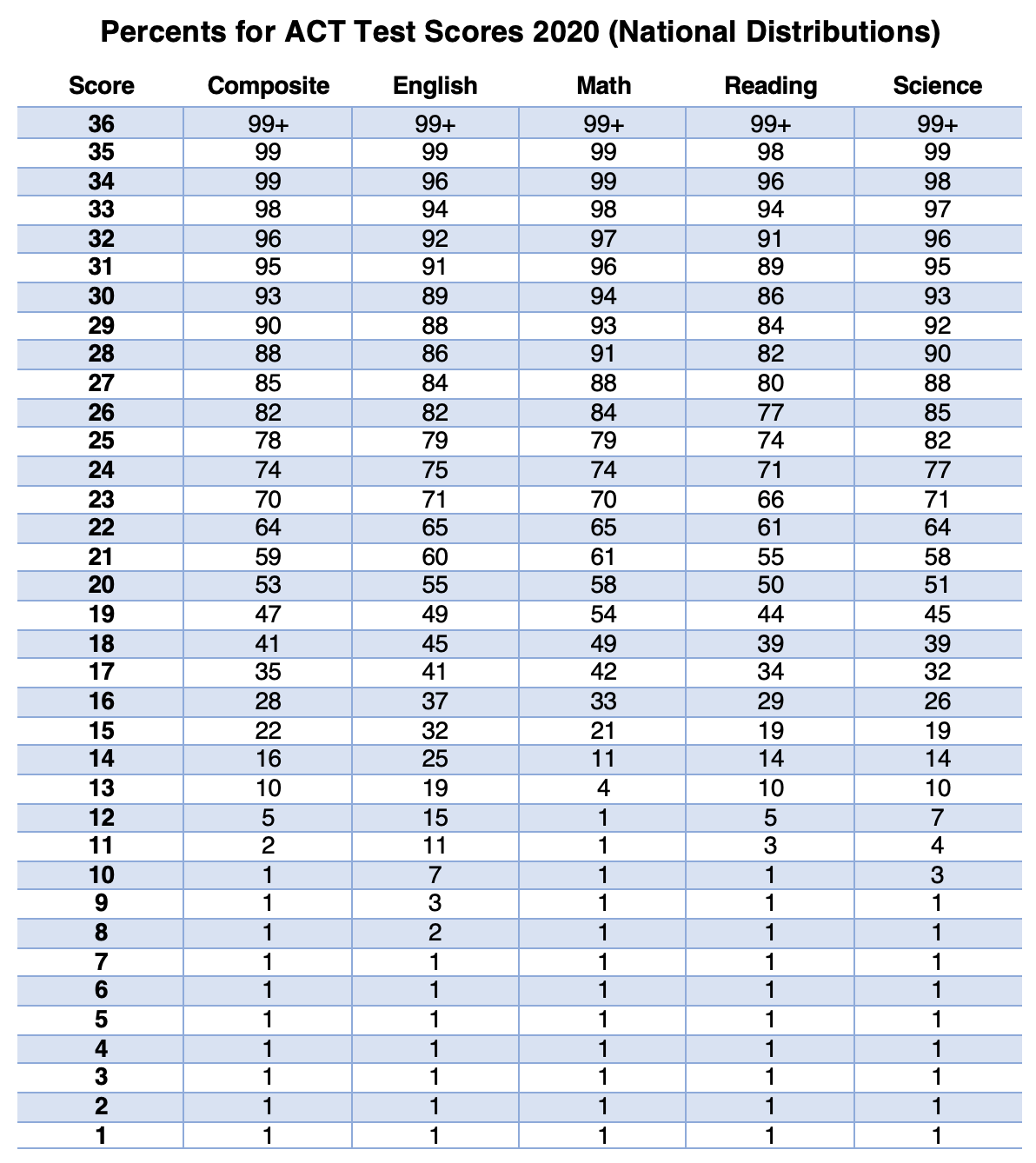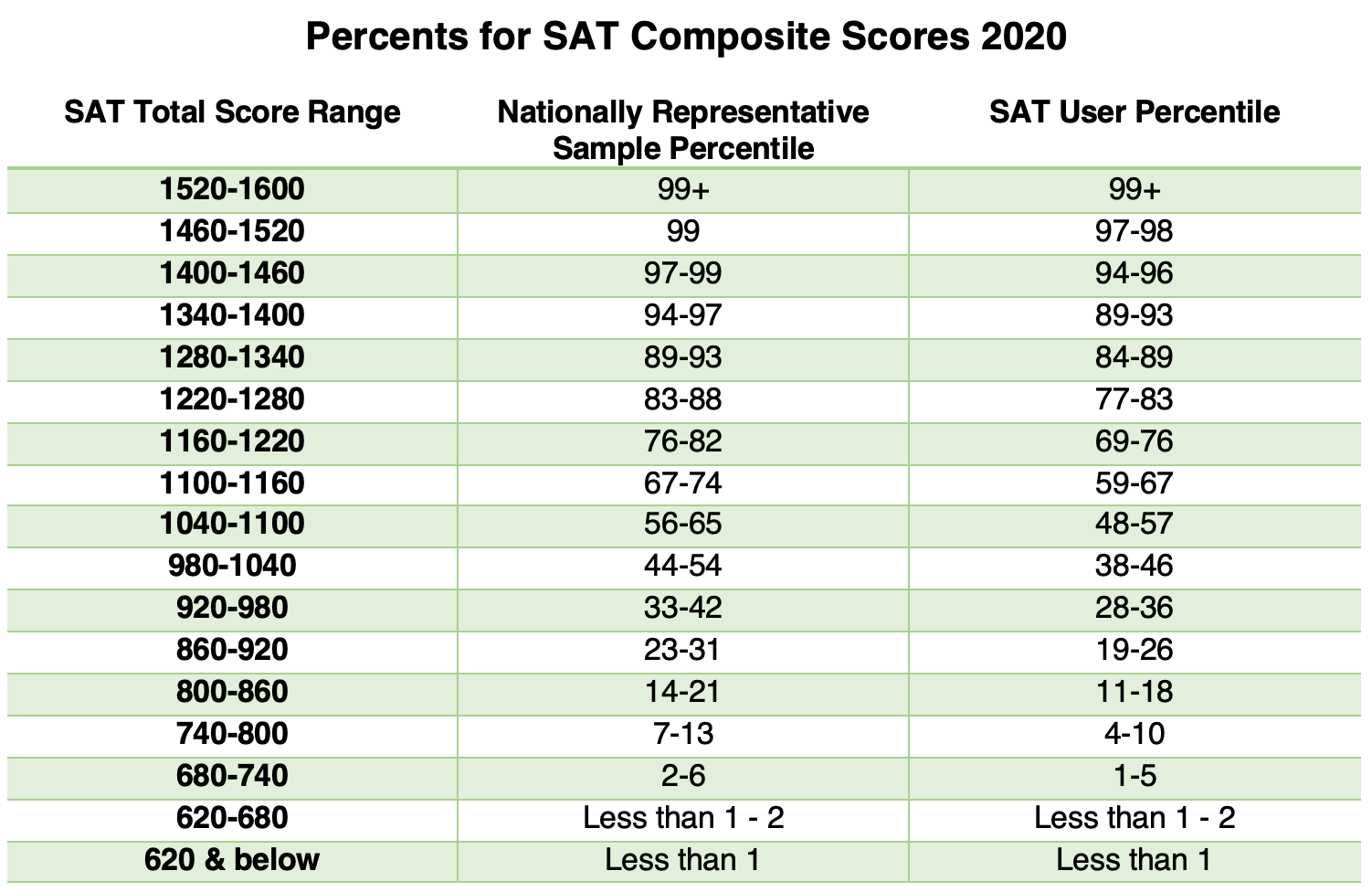Upon receiving your score report from the ACT and SAT, you will notice a few things:
-
your composite score (total score out of 36 for ACT and 1600 for SAT),
-
your individual section scores (English, Math, Reading, and Science for ACT and Evidence-Based Reading and Writing and Math for SAT),
-
and the percentile rankings for both your composite and section scores.
We’ve previously looked at how the ACT and SAT scores are calculated (“A Look at ACT & SAT Scoring”), but what exactly do the percentile rankings mean? And are these rankings significant to college admissions?
Let’s explore.
How are the percentile rankings calculated?
For both the ACT and SAT, percentiles offer a comparison between students who’ve taken the exams. Unlike your individual score, the percentile rankings place your ACT or SAT scores in comparison with everyone else who took the test at a given time and show how many people you scored equal to or higher than. The highest possible ranking is the 99th percentile and the lowest would be the 1st percentile.
How do the percentile rankings appear on score reports?
The ACT score report ranks your score in several ways, showing your percentiles for individual sections and question categories. This report allows you to see how you’ve performed when compared to national and state test takers.
The SAT score report also ranks your score for composite and individual sections, providing two separate percentiles: one in comparison to the typical SAT testers (SAT user percentile) and the other in comparison to a representative group of junior and senior students (Nationally Representative Sample Percentile). For the SAT, the user percentile rankings are derived from comparisons to past three graduating classes’ test scores rather than the specific group you tested with.
What are “good” percentiles and ACT or SAT scores?
Take a look at recent percentile rankings for ACT & SAT test scores. For ACT, scoring a 29 or higher on your composite score puts you in the 90th percentile or above when compared to other test-takers nationally. For the SAT, to be in the 90th percentile or above when compared to other test-takers, you would have to score mid-1300s or higher.

TABLE SOURCED FROM ACT 2020 NATIONAL DISTRIBUTION DATA

TABLE SOURCED FROM SAT 2020 SCORING DATA
How do colleges use the percentile rankings?
In general, the ACT or SAT score is more important within the college admissions process than the percentiles since the college admissions officers typically rely on their school’s respective score range for taking ACT or SAT scores into account.
However, percentile rankings can offer a way for college admissions to compare an ACT score to an SAT score. For example, if two applicants have similar applications, but one applicant took the SAT and one took the ACT, then, rather than going through the process of score conversion, the admissions officer could simply look at the percentile rankings. For instance, let’s say one applicant scored a 33 on the ACT, and the other scored a 1400 on the SAT. The ACT student would be in the 98th percentile nationally, and the SAT student would be in the 97th percentile (Nationally Representative) or 94th (SAT User).
Main Takeaway: While Percentile Rankings can be helpful in seeing how your score compares to other test takers, the ACT or SAT composite score is the most important piece of testing information for college admissions.
